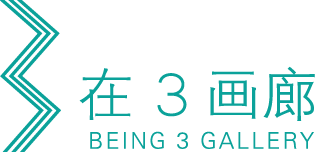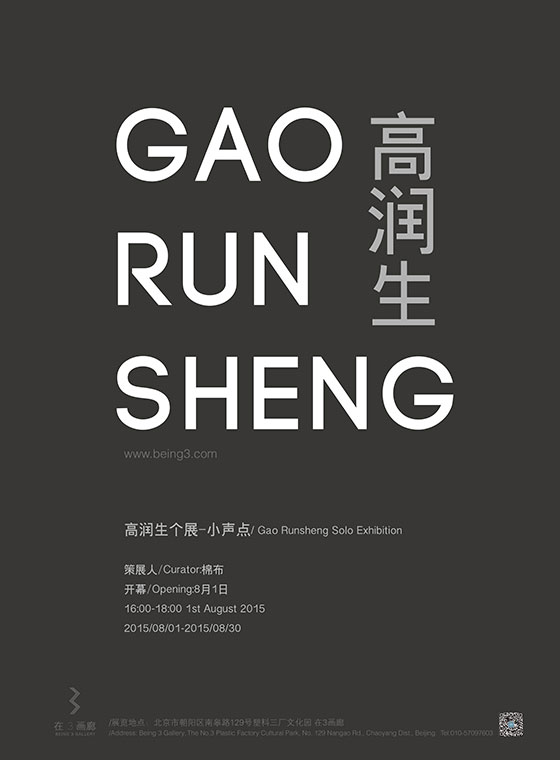

策展人:
棉布
艺术家:
高润生
Curator(s):
Mianbu
Artist(s):
Gao Runsheng
高润生 • 小声点 Gao Runsheng - Be Quiet
前言:缺失的和谐
作者:Viola / 翻译:韩杰
这个展览汇集了高润生2011年至2015年创作的作品。这些年来,艺术家经过深思熟虑,从一种超写实绘画风格转换成了另外一种将现实变得如此凝聚,近乎抽象的风格。
商场、堵车、超载的公共汽车……高润生在他的油画里完美地描绘了自己居住的中国大城市——北京,以及已成为我们这个时代特点的城市文化与后现代文化。在这里,现实与虚构,时间与空间,都混为一体,成为了高度现实,或者更确切地说,超现实。
为了创作完美的作品,高润生使用了摄影技术。这使他更接近超写实画家,甚至在此之前的印象派画家。后者清楚地知道自己不能与摄影竞争,所以他们选择在画中使用摄影,不表现那么多现实,而是通过不同寻常的视角、光效和色影来表现自己对现实的印象。
那么高润生对现实有什么印象呢?他作品中那些明亮的色彩与光滑的画面,那么像一幅广告(他曾在此领域工作过),它是一种冷漠的消费主义现实,几乎完全依赖于消费与外观。
作品场景经常取材于玻璃窗后(无论是公共汽车的窗户还是商店的橱窗),它体现了一种只有划分个体功能的屏障,甚至没有映射出个体的形象。而作品产生的孤立与疏远感觉跟爱德华·霍普的作品感觉很相似,不同之处在于爱德华·霍普的城市景观精简又沉默,而高润生的城市景观拥挤又嘈杂。
虽然他最近的一些作品更加综合,却还是保有这一特点。例如2014年创作的《鸟瞰街道》,作品中的城市景观用彩色的竖条纹描绘,好似一台无信号的电视机。同样,高润生在画布上精心再现的城市景观就像是美丽的容器,但是它们在努力地调整自己,来满足人们和自己真正的需求。
Preface: The Missing Harmony
by Viola
This exhibition brings together the works realized by Gao Runsheng between 2011 and 2015. During these years the artist has had time to reflect and to switch from an hyper-realistic genre of painting to another in which reality becomes so condensed to seem almost abstract.
Shopping malls, traffic jams, bus full of people… Gao Runsheng perfectly depictsin his oil paintings the Chinese megalopolis where he lived in, Beijing,along with the urban and postmodern culture that characterized our era. Here, reality and fiction, as well as time and space, are blended together to produce an higher reality, or rather, an hyper-reality.
To create works so perfect Gao Runsheng utilizes photography. This brings him closer to the hyper-realistic painters and, even before them, to the Impressionist painters. The latter, well aware that they can’t compete with photography, chose to utilize it in their paintings to represent not so much the reality but rather their own impressions of reality, through unusual visual angles, light effects and colored shadows.
But what are the impressions of reality that have Gao Runsheng? Judging from the bright colors and smooth surfaces, so similar to an advertisement - he worked in this sector - it is analienating and consumeristic reality, that rely almost exclusively on consumption and appearance.
The scene is often captured from behind a glass windows (whether the window of a bus or of a shop), that represents a kind of barrier with the sole function of dividing individuals, even without reflect their image. The resulting feeling of isolation and alienation is very similar to that emerging from the works of Edward Hopper, with the difference that his urban landscapes are rarefied and silent, whereas those of Gao Runsheng are overloaded and noisy.
Even his last works, although they are more synthetic, maintain this characteristic. As in “Aerial View of the Road”, realized in 2014, where the urban landscape is made with vertical colored strips that seem pretty similar to those of a TV that is not tuned in. In the same manner the urban landscapes so carefully reproduced oncanvas by Gao Runsheng are beautiful containers,but they struggle to adjust itself to people and their real needs.